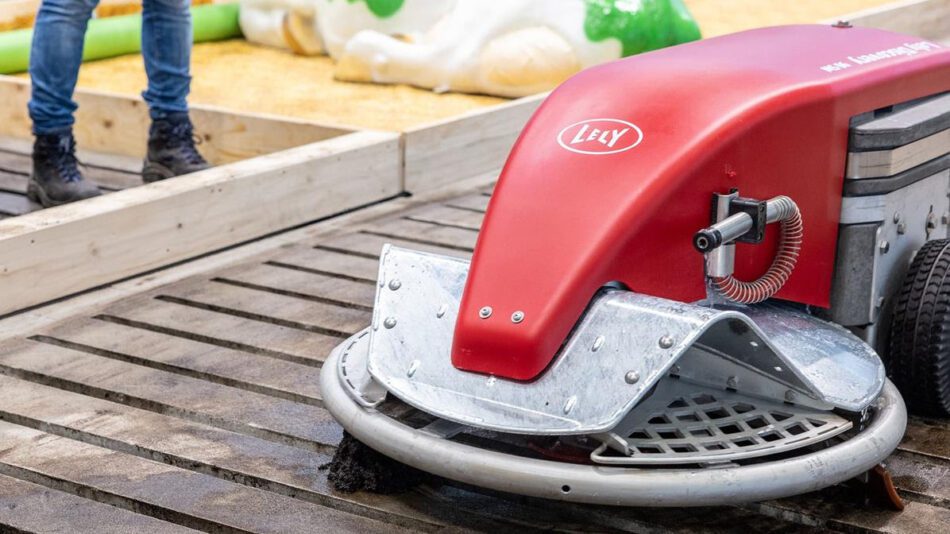EuroTier 2024: Trends in Digital Solutions for Herd Management, Quality Assurance and Smart Farming

Prof Matthias Schick, Strickhof und AgroVet-Strickhof, Lindau, Switzerland
Digital systems are increasingly finding their way into cattle, pig and poultry barns. They provide farmers with smart decision-making aids and help to further optimise work processes, produce more economically, promote animal welfare and reduce the workload on farms. Current developments in digital solutions show interesting perspectives for livestock farmers and provide them with practical benefits in important areas.
Numerous innovations
EuroTier 2024 is characterised by many innovations in the areas of digitalisation and smart farming. Recognisable trends are clearly moving in the direction of health monitoring, support for greater animal welfare and the use of AI (artificial intelligence) in animal farming. In addition to individual animal-related sensor systems, a trend towards camera-based systems is slowly becoming recognisable.
Great innovative power
The innovative strength of the agricultural machinery industry and the need for innovation in the field of digitalisation in agriculture is clearly demonstrated by the new products registered for this year’s EuroTier. More than 40 innovations have been registered for digital solutions alone.
Sensor systems for cattle and pigs
Several sensor systems close the gap to the calf in health monitoring. Data is recorded throughout the entire life of a cow, from birth through rearing and the production phase to slaughter. It is are used for the early detection of diseases, the selection of suitable young animals for breeding and to improve the economic situation.
Various sensor systems for cattle can now be used to detect temperature, standing and lying as well as lameness in addition to movement behaviour. There is a choice between ear tag sensors, rumen boluses and camera-based systems. However, there is still room for improvement in networking the sensors with the corresponding actuators and existing herd management software. Isolated solutions continue to dominate the market. Ear tag sensors for recording temperature and movement data are now also available in pig farming. In contrast, camera-based systems are used almost exclusively in poultry farming.
Recognising lameness in cattle at an early stage
The major problem of detecting lameness in cattle is particularly recognisable in larger herds and has so far only been solved with manual observation requiring a great deal of time. Several new systems that will be exhibited at EuroTier 2024 solve this problem using cameras and additional thermography. This enables early-stage lameness and Mortellaro (strawberry disease) to be recognised at various stages and appropriate recommendations for action to be derived.
Laying hens: In-ovo sex determination before the seventh day of incubation
In laying hen farming, automated sex recognition (in ovo) is now possible before the seventh day of incubation. This is achieved using AI-supported spectroscopy. Existing animal welfare regulations can even be undercut, while at the same time making laying hen farming more economical. This makes the killing of male chicks superfluous.
Cross-manufacturer networking
In addition to animal health, the optimised use of energy is a focal point of the innovations submitted. A German manufacturer is presenting a smart approach to cross-manufacturer networking of technology and energy control on farms. This allows manure robots and feed fences, as well as curtains and photovoltaic modules, to be interlinked. It remains to be seen whether this will open up a viable path to the much-discussed ISOBUS for indoor use, as only a few manufacturers are disclosing their interfaces for this system.
System approach along the value chain
In any case, it seems necessary to pursue a system approach along the entire value chain. Particular attention must be paid to animal welfare, workload, profitability and sustainability. In addition to data acquisition via sensors, AI is also increasingly being integrated. This means that optimisation processes can be initiated promptly and the farmer has several options to choose from.
Conclusion
The presentation of this year’s trends at EuroTier illustrates the immense innovative power of national and international companies in the livestock sector. However, the demands for improved added value, reduced workload and the trend towards greater animal welfare are also recognisable from the new products registered. A visit to EuroTier is definitely worthwhile.
Updates on EuroTier 2024:
www.eurotier.com
www.facebook.com/eurotier
www.instagram.com/eurotier_tradefair
www.linkedin.com/groups/2414416
www.x.com/eurotier
www.youtube.com/eurotier
About DLG
With more than 31,000 members, DLG is a politically independent and non-profit organisation. DLG draws on an international network of some 3,000 food and agricultural experts. Through its subsidiary, DLG International, DLG operates has subsidiaries in nine countries and also organizes over 30 regional agricultural and livestock exhibitions worldwide. DLG’s leading international exhibitions, EuroTier for livestock farming and Agritechnica for agricultural machinery, which are held every two years in Hanover, Germany, provide international impetus for the local trade fairs. Headquartered in Frankfurt, Germany, DLG conducts practical trials and tests to keep its members informed of the latest developments. DLG’s sites include DLG’s International Crop Production Centre, a 600-hectare test site in Bernburg-Strenzfeld, Germany and the DLG Test Centre, Europe’s largest agricultural machinery test centre for Technology and Farm Inputs, located in Gross-Umstadt, Germany. DLG bridges the gap between theory and practice, as evidenced by more than 40 working groups of farmers, academics, agricultural equipment companies and organisations that continually compare advances in knowledge in specific areas such as irrigation and precision farming.





